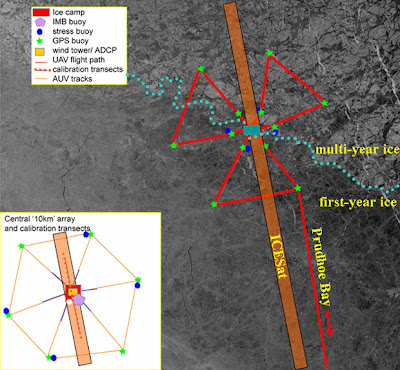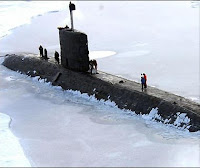This is the last day on the ice, with the majority of the people returning to terra firma (Prudhoe/Fairbanks).

copyright Los Angeles Times article






| Sunday | Monday | Tuesday | Wednesday | Thursday | Friday | Saturday |
| 1 Twi: 5:19 Sunrise: 6:39 Sunset: 20:57 Twi: 22:17 Moonrise: 20:20 Moonset: 6:48 |  2 2Twi: 5:12 Sunrise: 6:33 Sunset: 21:02 Twi: 22:23 Moonrise: 22:30 Moonset: 6:10 Full Moon: 9:16am | 3 Twi: 5:05 Sunrise: 6:27 Sunset: 21:07 Twi: 22:29 Moonrise: none Moonset: 5:24 | 4 Twi: 4:58 Sunrise: 6:22 Sunset: 21:12 Twi: 22:36 Moonrise: 1:28 Moonset: 3:53 | 5 Twi: 4:51 Sunrise: 6:16 Sunset: 21:17 Twi: 22:42 Moon: down all day | 6 Twi: 4:43 Sunrise: 6:10 Sunset: 21:22 Twi: 22:49 Moon: down all day | 7 Twi: 4:35 Sunrise: 6:04 Sunset: 21:27 Twi: 22:56 Moon: down all day |
| 8 Twi: 4:28 Sunrise: 5:58 Sunset: 21:33 Twi: 23:04 Moon: down all day | 9 Twi: 4:19 Sunrise: 5:53 Sunset: 21:38 Twi: 23:11 Moon: down all day |  10 10Twi: 4:11 Sunrise: 5:47 Sunset: 21:43 Twi: 23:19 Moon: down all day Last Qtr: 10:05am | 11 Twi: 4:02 Sunrise: 5:41 Sunset: 21:49 Twi: 23:28 Moon: down all day | 12 Twi: 3:52 Sunrise: 5:35 Sunset: 21:54 Twi: 23:37 Moon: down all day | 13 Twi: 3:42 Sunrise: 5:28 Sunset: 22:00 Twi: 23:46 Moonrise: 7:40 Moonset: 14:01 | 14 Twi: 3:32 Sunrise: 5:22 Sunset: 22:06 Twi: 23:56 Moonrise: 6:42 Moonset: 16:49 |
www.sunrisesunset.com/custom_srss_calendar.asp, 146 W 73 N GMT-8